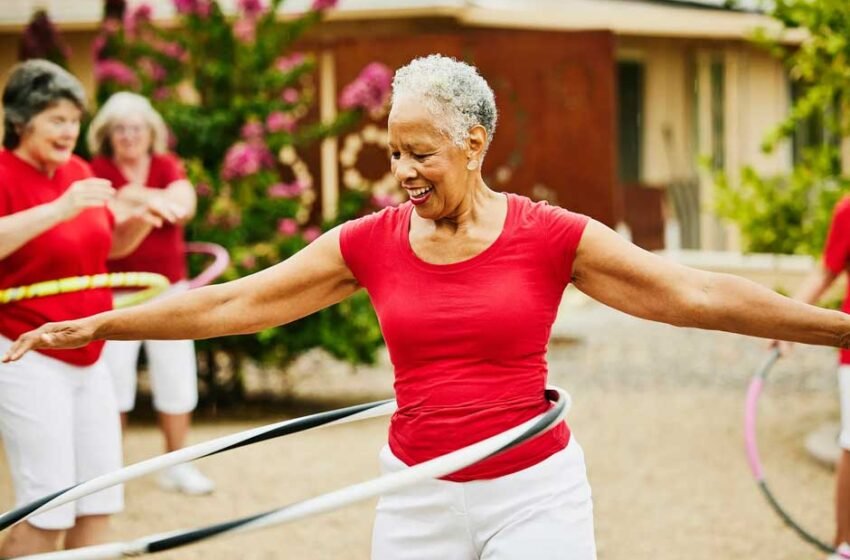Why Aging Can Be The Start Of Something New

Aging has a funny way of being misunderstood. People still whisper about it like it’s a shadow creeping up behind them, when in reality it’s just another season of life, one that can actually feel freeing if you let it. For all the stereotypes and anxieties that swirl around birthdays with big numbers, the truth is that the later chapters can be filled with opportunities that your younger self didn’t even have the bandwidth to imagine. Let’s break apart that tired narrative and look at what getting older really offers.
Rethinking The Myths
Most of us grew up hearing the same recycled stories about aging: that it means slowing down, giving things up, or settling for less. The reality is far less bleak and much more dynamic. People are living longer and better, not just in terms of health but also in how they spend their days. The conversation about myths about aging is shifting as more seniors step into roles of creators, entrepreneurs, travelers, and learners. The past few decades have proven that “retirement” doesn’t have to mean retreat. It can mean reinvention.
Think about the way older adults are reshaping communities through volunteer work, mentorship programs, and even social media. There’s something magnetic about watching someone redefine what society expected of them. The old trope of sitting quietly in a rocking chair has been replaced by images of older adults hiking, painting, starting second or third careers, or just enjoying leisure on their own terms. The myths fall flat when you look at the evidence: age isn’t a withdrawal slip, it’s a deposit into a bank of freedom you didn’t always have.
Health On Your Terms
One of the most encouraging developments around aging is how personalized health has become. It’s no longer a one-size-fits-all approach. From tailored exercise regimens to nutrition plans that account for metabolism changes, the options today give seniors more control than ever before. People in their sixties and seventies are signing up for dance classes, pickleball tournaments, and marathon training groups. The message is clear: you don’t have to stop moving, you just have to find movements that fit.
That doesn’t mean pretending the body works the same way it did at twenty. It means working with it, not against it. Strength training to protect bone density, flexibility exercises for balance, and nutrition that supports heart and brain health—these aren’t sacrifices, they’re tools. When you strip away the outdated fear of decline, what’s left is an understanding that health in later years can be about curiosity and experimentation, not just maintenance.
Connection As A Superpower
Loneliness has been spotlighted as a modern epidemic, and it’s true that social ties matter more than many people realize. For older adults, staying connected isn’t just nice, it’s vital. But here’s the part that rarely gets talked about: seniors are often better at building meaningful relationships than younger people. Why? Because they’ve had time to cut through the noise of shallow friendships and focus on the ones that nourish them.
Technology has helped bridge gaps too. FaceTime, group chats, and online hobby groups have opened new doors for staying in touch with family or meeting peers around the world. The stereotype of older adults being “out of touch” with tech is getting tired, especially when you see grandparents running entire Etsy shops or joining weekly Zoom book clubs. Staying connected isn’t a chore—it’s a skill honed over decades.
Living Near Family And Finding Balance
When families talk about senior living, one of the biggest factors is location. It’s not just about convenience, it’s about belonging. Being close to family can provide a sense of continuity and support that money can’t buy. Studies have shown that intergenerational connections boost mental health for both seniors and younger relatives. That’s why when families look at options like Los Angeles, New York City or Glen Mills senior living comunities, staying close to your relatives has its benefits come up as more than just a side note. It’s often the deciding factor.
Think about the ripple effect: a grandmother in Glen Mills who gets to see her grandchildren’s school plays, or an uncle in Los Angeles who meets his family for Sunday dinners. These aren’t minor details, they’re the threads that hold a life together. And unlike the past, when distance was almost inevitable, today’s communities are designed with proximity in mind. It means older adults don’t have to choose between independence and closeness—they can have both.
Purpose That Doesn’t Expire
One of the most underappreciated aspects of aging is how it clarifies what matters. Careers, family obligations, and societal pressures often drown out personal passions earlier in life. Later years open space for purpose that feels chosen rather than assigned. Whether that means volunteering, taking up advocacy, or finally writing the memoir that’s been tucked away in your mind, there’s something powerful about realizing that purpose doesn’t come with an expiration date.
Communities that encourage lifelong learning and creativity are flourishing. Universities are opening programs for senior learners, arts centers are expanding their offerings, and even local governments are recognizing the value of engaging older adults in civic planning. Purpose isn’t a luxury in senior living—it’s the fuel.
Redefining Freedom
The greatest irony of aging might be that many people finally feel freer at a stage of life that society once framed as restrictive. With children grown and careers winding down, seniors often find they can prioritize experiences that bring them joy without the same constraints. Travel becomes more about exploration than obligation. Hobbies are indulged for pleasure rather than as side hustles. Even rest feels different when it’s not stolen from a packed schedule but claimed as something deserved.
This freedom isn’t about disengaging—it’s about re-engaging in ways that feel authentic. It’s about saying yes to opportunities and no to the noise that doesn’t matter anymore. Aging, then, can be reframed as not just adding years but adding options.
Closing Perspective
The conversation around aging is overdue for a rewrite. For too long, it’s been painted as a decline, a burden, or something to dread. But the truth is far more inspiring. It’s a phase rich with possibility, clarity, and connection. If younger generations could see it through the eyes of those who are already living it fully, the word “aging” would stop being a warning sign and start sounding like an invitation.
That’s the story worth telling: not of endings, but of beginnings that look different and, in many ways, better.





